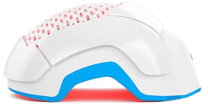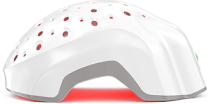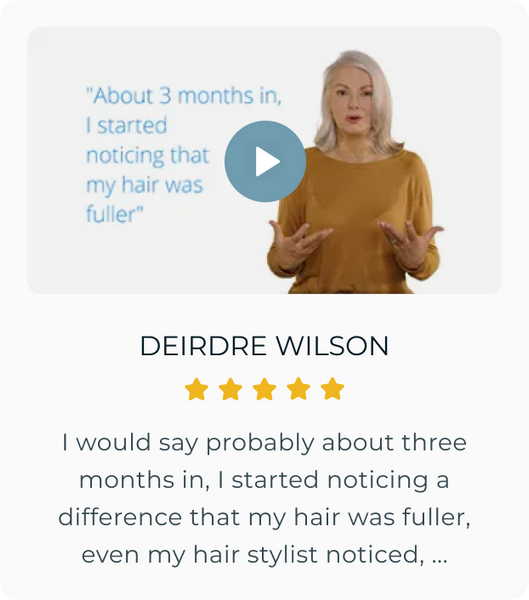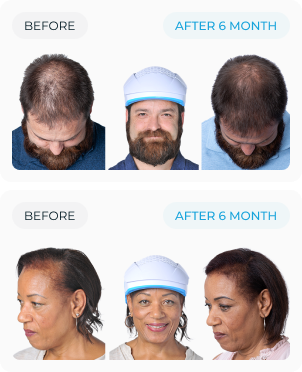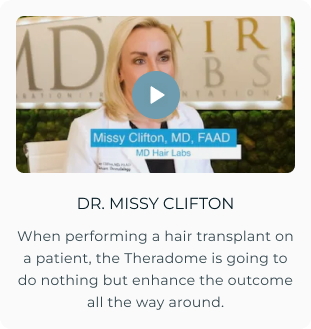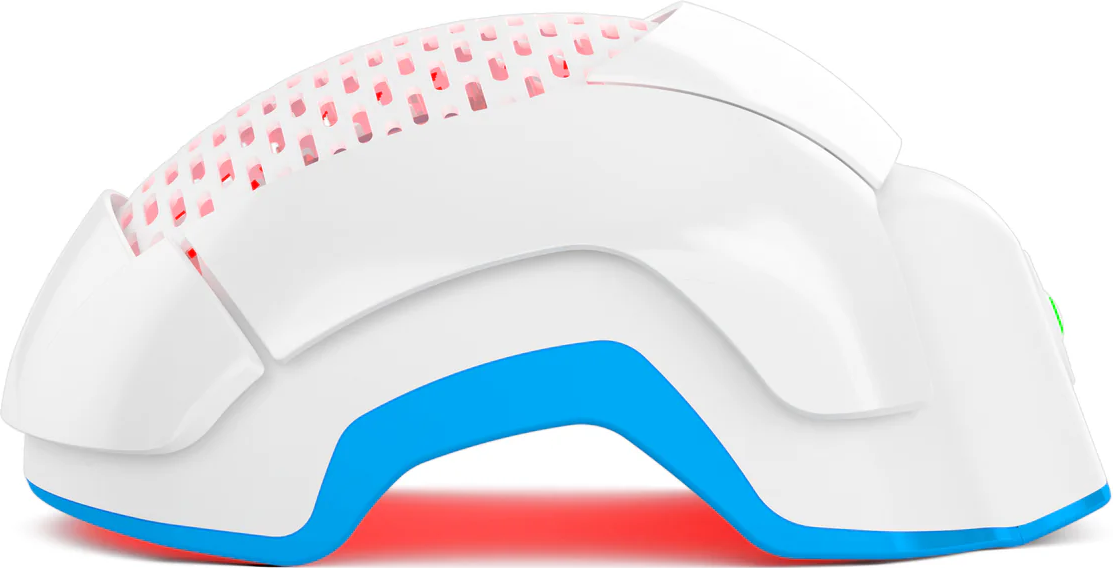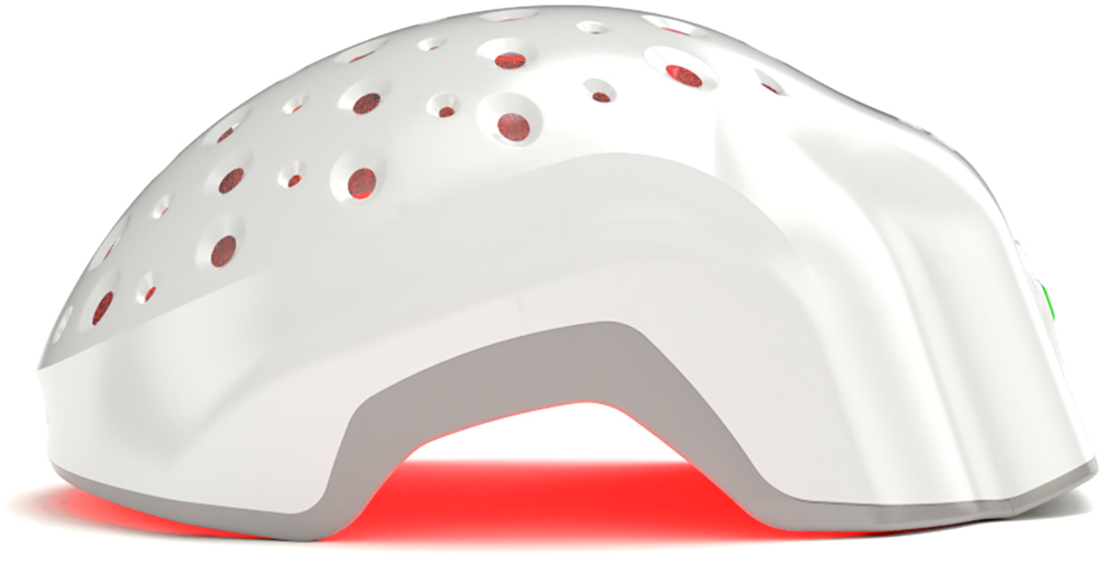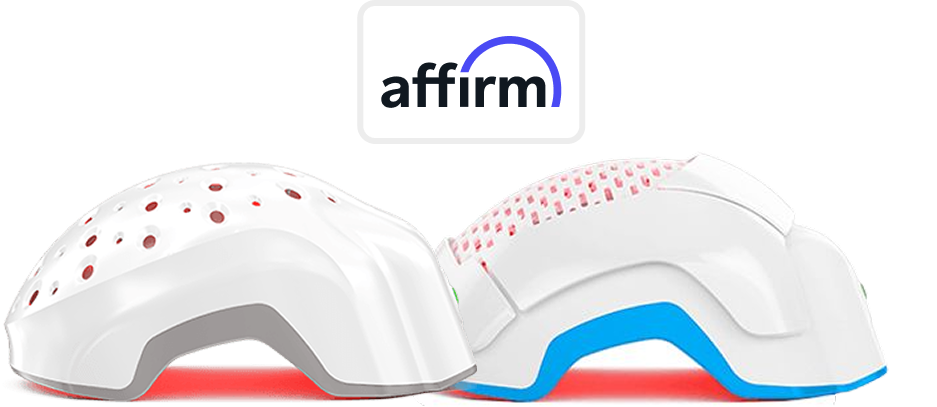Struggling to keep your hair moisturized no matter how much product you use? You might have low porosity hair, a unique hair type that often resists moisture and product absorption. Unlike high porosity hair which absorbs moisture easily and quickly, low porosity hair is defined by tightly bound cuticles that lay flat, making it difficult for water, oils, and conditioners to penetrate the hair shaft. This can leave your hair feeling dry or weighed down, even when you’re using high-quality products.
Understanding low porosity hair is the first step toward healthier, more manageable strands. With the right care routine, you can help your hair retain moisture, improve softness, and enhance its natural shine. In this guide, we'll guide you through what does a low porosity hair look like, how to identify it and the best ways to care for it.
What is Low Porosity Hair?
Your hair is made of dead cells, arranged in three main layers:
- The Cuticle: This is the outermost layer of your hair made of tiny, overlapping plates.
- The Cortex: This is the thickest middle layer which holds the fibrous proteins and pigments that give your hair its natural color.
- The Medulla: This is the innermost, central layer of your hair strand.
The arrangement of those cuticles determines the porosity of your hair, which is simply how well your hair can soak up and hold onto water and other hair products like conditioners or oils.
If your cuticles are tightly packed and lie very flat against each other, then you have low porosity hair. This tight structure makes it harder for moisture to get inside the hair shaft. Water and products tend to sit on the surface instead of truly penetrating, making your hair heavy.
Low porosity hair is usually determined by your genetics. It is not caused by chemicals or heat on your hair. In fact, heat damage usually leads to high porosity hair, making it difficult to retain moisture.
What Are The Signs of Low Porosity Hair?
Some hair with high porosity can soak up moisture like a sponge, but low porosity hair cannot. If you’ve ever used a deep conditioner and noticed it just sits on your hair without soaking in, your hair might have low porosity and might be resistant to moisture instead of absorbing it properly.

But before you start tossing out your haircare products in frustration, let’s break down the key signs of low porosity hair and understand what low porosity hair looks like.
1. Difficult to Absorb Moisture
When you wash your hair, notice how the water behaves. Does it immediately get absorbed, or does it just sit on the surface? If your hair repels water like a raincoat instead of soaking in, that’s a clear sign of low hair porosity. Low porosity hair doesn’t let moisture in easily, which is why hydrating it properly requires a little more care and the right approach.
2. Products Sit on the Surface (Instead of Absorbing)
Low porosity hair has tightly sealed cuticles which makes it difficult to absorb hair products like oil, moisturizer, or conditioner and the products sit on the surface of your hair, leading to product buildup and greasiness. It can make the best hair treatments less effective if they can't penetrate past the surface.
3. Takes Longer to Wash and Dry
Washing and drying hair with low porosity can take longer as it can be hard to get your hair fully wet, and dry it after. Water tends to stay on the surface instead of soaking in. Once it finally does, it holds onto it for a long time.
That’s why your hair may take hours, or even the whole day, to air dry. Even a blow dryer might take longer than it does for someone with normal or high porosity hair.
4. Deep Conditioners Don’t Seem to Work (Unless You Add Heat)
Low porosity hair cannot absorb deep conditioners making them less effective. It needs heat to open up the cuticle layer and allow hair products in. Without heat, most deep conditioners barely penetrate, leaving your hair as dry as before.
How to Test for Low Porosity Hair?
If you're not sure about the porosity of your hair, here's a simple test you can take to determine whether you have low hair porosity or not.
The Float Test
Drop a clean strand of hair into a bowl of water and see how it floats on the water.
- If the hair floats on the top for a longer time before sinking, it has low porosity;
- If the hair floats somewhere in the middle of the bowl, it has medium porosity;
- And, if it sinks quickly to the bottom, it has high porosity.
The Spray Test
Spray some water on dry hair and observe. If it beads up instead of absorbing instantly, your hair has low porosity.
What Are The Causes of Low Porosity Hair?
Low porosity hair occurs when the hair's cuticle layer lies flat and tightly sealed, making it difficult for moisture to enter. This can be due to natural genetics or certain external factors:
-
Genetics: Most people are born with their hair porosity. If your family members have low porosity hair, chances are you do too.
-
Age and Hormones: Natural changes in hormones or aging can alter hair structure, sometimes leading to tighter cuticle layers.
-
Product Buildup: Using heavy oils, silicones, or protein-rich products too often can cause buildup that seals the hair shaft and mimics low porosity behavior.
-
Heat Damage: While high heat typically causes high porosity, overuse of low or moderate heat (like blow drying without steam) can harden the cuticle over time.
-
Hard Water Exposure: Minerals from hard water can coat the hair, making it more resistant to moisture. This buildup can lead to symptoms similar to low porosity.
- Environmental Factors: Pollutants, UV exposure, and certain climate conditions can affect how the cuticle responds to moisture and products.
What Are The Common Problems You Face with Low Porosity Hair?
Living with low porosity hair can be challenging, especially if you don’t know what to expect. This hair type has tightly packed cuticles that make it hard for moisture and products to get in. As a result, you often deal with a unique set of everyday problems. Here are some of the most common issues:
1. Product Buildup
Since low porosity hair repels moisture, conditioners, oils, and creams often sit on top instead of being absorbed. This leads to heavy buildup on the scalp and strands, making your hair feel greasy, sticky, or dull, even if it's clean.
2. Difficult to Moisturize
Hydrating low porosity hair can feel like a never-ending battle. Water and moisturizing products don’t easily penetrate the hair shaft, so hair may stay dry or brittle despite your best efforts.
3. Long Drying Time
Low porosity hair holds onto water for a long time once it gets wet. Air drying can take several hours or more, and even blow drying takes longer compared to other hair types. This can be inconvenient for people with busy schedules.
4. Poor Product Absorption
Many hair products like deep conditioners or leave-ins don’t seem to work well. This is because they sit on the surface instead of being absorbed, leaving hair coated but not nourished.
5. Styling Challenges
Low porosity hair may resist curling, straightening, or holding styles. Without the right prep, heat styling and chemical treatments often have poor results because the hair shaft doesn't open up easily.
6. Increased Frizz and Tangling
When moisture can’t get in, the hair becomes more prone to dryness, frizz, and tangling. This makes detangling sessions longer and more frustrating.
7. Sensitivity to Protein
Low porosity hair doesn’t usually need a lot of protein. Using protein-heavy products can leave the hair feeling stiff, brittle, or straw-like, leading to breakage.
By understanding these common issues, you can make better choices in your hair care routine like using lightweight, water-based products, applying heat during deep conditioning, and avoiding heavy oils. Recognizing the challenges of low porosity hair is the first step to keeping it healthy, manageable, and moisturized.
What Are The Benefits of Low Porosity Hair?
While low porosity hair can come with its own set of challenges, it also offers some unique advantages, especially when cared for properly. Here are some of the key benefits of having low porosity hair:
- Holds Moisture Well: Once moisturized, it stays hydrated longer helping reduce the need for frequent moisturizing compared to other hair types.
- Stronger Hair Strands: Tightly packed cuticles help reduce hair breakage and split ends when handled gently.
- Longer-Lasting Hair Color: If you color or dye your hair, the pigment tends to stay locked in longer and fade more slowly than in high porosity hair.
-
Less Frizz in Humidity: The tight cuticle layer blocks excess moisture from entering and prevents your hair from getting frizzy when humidity levels rise.
-
Hair styles Stay Longer: Braids, curls, and twists in low porosity hair hold shape better and stay in place with minimal touch-ups.
- Naturally Shiny: Low porosity hair often has a smooth surface that reflects light easily, giving your hair a naturally glossy and healthy-looking shine without needing a lot of products.
How to Take Care of Low Porosity Hair?
Low porosity hair isn’t high maintenance, it just needs a different strategy to take care of. The trick is getting moisture in without making your hair feel suffocated. Using little heat and the products with the right formulation can help you maintain your low porosity hair.
Here’s how.
1. Cleansing: Clear the Buildup, Let Moisture In
Low porosity hair holds onto product residue for a long time. When conditioners and styling products don’t get absorbed, they sit there, creating layers of buildup that make it even harder for moisture to penetrate.
- Use a clarifying shampoo every few washes to break through product residue. Look for one with gentle surfactants that remove buildup without stripping your scalp dry.
- On regular wash days, use sulfate-free mild cleansers which keep your scalp fresh without over-drying your hair.
2. Moisturizing: Hydration without the Heaviness
Your hair needs moisture to be soft, flexible and resilient, and the natural moisture of your hair strands may not be enough. So, you should regularly moisturize your hair with moisturizing products.
- Start with a lightweight, water-based leave-in conditioner—something that hydrates without sitting on top.
- Humectants like glycerin and aloe vera help pull moisture into your strands—just don’t overdo them in humid climates (unless you love frizz).
- Deep conditioners actually work better with heat—a steam treatment or a heated cap opens up the cuticles and helps ingredients sink in.
- Ditch the oil-heavy products that just sit there. Stick to lightweight, penetrating oils like argan, grapeseed, or jojoba oil instead of thick ones like castor oil.
3. Styling: Less Product, More Impact
When it comes to styling, less is more. Low porosity hair doesn’t need to be drowned in waxes, heavy creams, and thick gels—it needs hydration with just enough hold to keep things in place.
- Look for styling products with water as the first ingredient—because moisture should come first.
- Mousses, lightweight gels, and milks work better than butters that just sit there and make hair feel sticky.
- If you love oils, use them as the last step to seal in moisture—not before your hair actually absorbs water.
4. Avoiding Hot Tools: Stop Making Moisture Absorption Even Harder
Flat irons, curling wands, and excessive blow-drying tighten the cuticle layer even more, making it even harder for your hair to hold onto moisture. If you must use heat:
- Always use a heat protectant—because heat damage is not reversible.
- Stick to low heat settings—your hair doesn’t need a scorching to be styled.
- If you need to stretch or dry your hair, use indirect heat methods like a hooded dryer or tension blow-drying to minimize cuticle damage.
Conclusion
Low porosity hair can be frustrating—but only if you treat it like other hair types. Hydration takes patience, buildup happens fast, and products need to be chosen wisely to avoid them just sitting there. The key is gentle cleansing, lightweight moisture, and heat-assisted deep conditioning to help open up the cuticle just enough for hydration to do its job. Give your hair what it actually needs, and it will reward you with healthy, manageable strands that stay moisturized without the guesswork.


